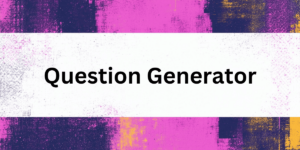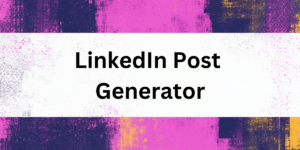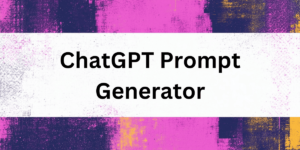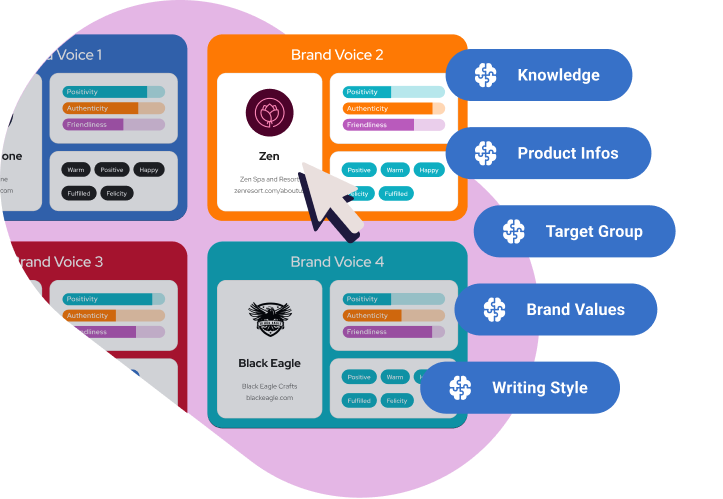Staying active on LinkedIn is an effective way to grow your business or professional network and achieve your marketing objectives.
An effective LinkedIn marketing strategy opens doors to endless opportunities. It can help build brand awareness, generate quality leads, and establish thought leadership.
Want to reap one or more of those benefits yourself?
This article will reveal six essential steps for a LinkedIn marketing strategy that drives meaningful engagement and results.
Let’s get started!

What is LinkedIn Marketing?
LinkedIn marketing is the use of LinkedIn to connect with your target audience, build relationships, and, ultimately, achieve your professional or business goals.
But why use LinkedIn when there are other social platforms at your disposal?
LinkedIn boasts one billion users worldwide, with over 67 million registered companies. That makes it an ideal platform for professionals looking to connect with other employees. It also provides a unique opportunity to reach businesses compared to other social media platforms.
Overall, LinkedIn marketing can help you establish your brand, share valuable content, generate leads, and engage with potential customers, partners, and industry leaders. With LinkedIn campaigns, you can take your career or business to the next level.
All this isn’t to say you should rely only on LinkedIn marketing to ensure professional or business success. Of course, you can use other channels for the best results.
For instance, why not use email marketing alongside LinkedIn campaigns? Send newsletters promoting your products or services to potential B2B clients with whom you interact on LinkedIn. You can also share content about some industry observations with partners and industry leaders.
You can also attend networking events in your industry to share perspectives and forge meaningful connections. These events can also be super useful for prospecting. You can create Uniqode’s Business Cards and share them with other event attendees. Then, use the two-contact sharing feature of these cards to collect contact and company information of the folks you’ll interact with. This can help enrich your professional network and even open doors for future collaborations.
With the right tools, you would be able to use this information and find their email addresses by names, building your email list.
6 Steps to an Effective LinkedIn Marketing Strategy
Now you know why you should take advantage of LinkedIn marketing. Next, let’s look at how to take your LinkedIn presence to the next level.
1. Define your goals
The first step to a successful social media strategy is defining exactly what you hope to achieve.
Do you want to increase brand visibility, generate leads, establish leadership, or drive website traffic? Your objectives could be varied, but they must be clear and focused.
Aim for specificity in your goals. Rather than a broad objective like “increase visibility,” target something more actionable, such as “grow our follower base by 20% within six months.” Make your goals Specific, Measurable, Achievable, Relevant, and Time-bound (SMART).
Once you define your goals, you’ll know what strategies to implement to achieve them.
Assume a tech startup sets this SMART goal: “to boost brand visibility among industry professionals by increasing LinkedIn followers by 25% in three months.” Then its marketing team can focus on creating advanced tech tips and trends while leveraging LinkedIn’s paid advertising to increase its following.
2. Optimize your LinkedIn page
Your LinkedIn Business Page is often the first point of contact between your company and potential clients or partners. Your profile page must make a great first impression. To achieve this, you need to optimize it.
Start with the basics. Use a clear, professional logo and a banner image that speaks to your mission and values. To take it a step further, applying graphic design tips for social media can help ensure your visuals are not only polished but also tailored for maximum engagement across LinkedIn and other platforms.
Your “About” section is your elevator pitch, so make every word count with a concise description of what you do and why it’s unique. Don’t forget to sprinkle in some SEO-friendly keywords. These keywords help people find your page when they’re searching for what you offer, both on LinkedIn and in search engines.
Also, use LinkedIn Showcase Pages (or affiliated pages) to elevate your presence on the platform even further. These LinkedIn pages are designed to spotlight individual brands, products, or initiatives, allowing you to tailor your messaging to specific segments of your audience.
For instance, if your company offers multiple solutions or services, each can have its own Showcase Page so you can engage with a targeted audience, share relevant, engaging content, and build a dedicated community around each specific offering.
3. Understand your audience
To make your marketing strategy work, you need a clear understanding of who your audience is.
If you’re just starting on LinkedIn and haven’t posted any content yet, you can understand your target audience by sending surveys to potential customers or partners, doing market research, and even performing some competitor analysis.
Joining LinkedIn groups is also a valuable strategy for understanding your target audience. However, to gain valuable insights with this LinkedIn group strategy, you’ll need to join the specific groups your target audience frequents.
Create an audience persona that captures all your findings. This persona shall guide all your LinkedIn marketing efforts.
Now, if you’ve already been posting content on LinkedIn, apart from the strategies above, you can also understand your audience through LinkedIn analytics.
LinkedIn provides a range of robust tools that offer insights into the demographics of your current followers. They can show you the job functions, industries, and even company sizes of the people you reach with your relevant content.
Observing audience interactions with your effective content is another crucial way to understand your audience. Pay attention to the comments and feedback on your LinkedIn posts. What questions are your followers asking? What content are they engaging with the most?
4. Create valuable content
Now that you know your target audience, you can start creating fresh content that truly resonates with them. Like any social network platform, LinkedIn rewards valuable content.
On this social media channel, a well-planned content calendar can significantly impact not just your audience engagement rates but also your overall visibility.
The LinkedIn platform allows for a rich variety of engaging content types. You can choose from:
- Text-only posts
- Single-image posts
- Multi-image posts
- Native video content
- Image carousels
- Video carousels
- Polls
Sharing insights, industry news, and how-to guides is crucial to keep your audience ahead of the curve. Remember, each piece of content should aim to establish your company as a thought leader. So, answer common questions and offer real solutions through your content to demonstrate expertise and build trust with your followers.
For example, if you’re a PR company targeting a specific audience segment, create content that resolves the pain points of that audience segment. You can create posts on creative food & drink PR content ideas, for example, if you’re providing public relations services to food and beverage companies.
That type of content resolves a real pain point and positions you as an expert in your field.
Don’t overlook the power of User-Generated Content (UGC), such as client stories, testimonials, and case studies. UGC provides social proof and underscores the impact of your work or products. This makes it a powerful tool in your content arsenal. Additionally, don’t overlook the potential of animated marketing videos for LinkedIn marketing. Collaborate with a good video animation studio and create engaging videos for your LinkedIn.
Whatever type of content you opt for, make sure it’s also high-quality. Do your research to ensure your content is factual and updated. This is one popular use case of AI in a marketing strategy. Use artificial intelligence to fact-check your content and make changes where necessary.
LinkedIn recommends at least 1200×67 pixels for clarity if you’re using images. Aim for a resolution range of 256×144 px to 4096×2034 px for optimal video quality.
5. Use paid campaigns
Integrating LinkedIn ads into your marketing strategy can provide a good return on investment.
LinkedIn is particularly effective for B2B marketers. Over 80% of B2B leads come from LinkedIn, compared to 13% on X and 7% on Facebook.
LinkedIn offers several paid advertising options.
- Sponsored content: Business owners can use sponsored content to promote posts directly in the feed of their target audience. You can promote a video, image, or article, and it’ll appear naturally in the feed with the label “Promoted.” It’s an excellent way to increase visibility for your most important content or announcements.
- Sponsored InMail: This feature lets you send personalized message ads directly to your target audience’s LinkedIn inboxes. It’s particularly effective for direct marketing campaigns, invitations to webinars, and other similar events.
- Text and dynamic ads: These are more traditional ad formats that appear in various places on the site, including the sidebar. Text ads are straightforward, while dynamic ads are personalized to the viewer, using their LinkedIn profile data to customize the ad content.
This professional platform offers detailed targeting options to maximize your paid efforts. You can specify your audience based on job title, industry, current company size, location, and even interests or previous interactions with you or your company.
That precision ensures your ads are seen by the people most likely to be interested in your offering.
6. Track and refine your performance
LinkedIn provides robust analytics tools for both organic posts and paid advertisements. These insights show you how your content performs in terms of reach, engagement, and viewer actions.
But it’s crucial to go beyond surface-level metrics. Dive into the data to understand your audience’s behavior. Which types of content are driving the most engagement? What times of day do your posts receive the most attention? How are your paid campaigns contributing to your goals?
Equipped with this information, you can start to refine your approach. Maybe you’ll find that videos perform better than text posts, or that the best posting times are Tuesday and Wednesday mornings. Perhaps your data will show that certain messages resonate more with your relevant audience, leading to higher conversion rates.
The goal is to be iterative with your social media content strategy. Use the data to make informed decisions, test new approaches, and continuously optimize your content and campaigns.
In social media marketing, what worked yesterday might not work tomorrow. So, stay flexible, be willing to adapt, and always keep your audience’s needs and preferences at the forefront of your strategy.
Conclusion
You now know the key six steps to a LinkedIn marketing strategy that aligns with your professional or business objectives and connects you with the right audience.
Building an effective LinkedIn marketing strategy starts with clear goals. Remember to optimize your profile, understand your niche audience, and create valuable content. Also, take advantage of targeted paid advertising and continuously track your campaign performance.
Now, it’s time to take action. Your LinkedIn marketing journey starts now.
Chris Norton
Host of Embracing Marketing Mistakes, a UK Top 10 marketing podcast that celebrates marketing fails, and Founder of award-winning B2C specialist PR agency Prohibition. His social media training blog is listed in the UK's top 10 PR blogs.






















